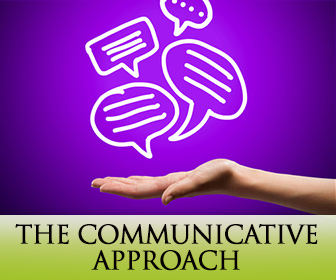Have you ever wondered why people learn English?
What do they need it for? If you ask around, you’ll hear things like, “I need it for work” or “ I need it because I travel a lot” etc. The real question still stands: why do they need a second language? Believe me, it’s not because they like grammar. They need it to communicate. Communication skills are vital for everyone alike. Some jobs, like teaching, depend on it. With children, it is not any different. All our students need to learn to communicate, specially in today’s world. Helping students of all ages acquire communicative skills is a priority. That’s why if you teach children, I recommend you emphasize communication in the classroom integrating all four skills (reading writing, listening and speaking). If they learn to communicate early on, they will be better prepared to face their present and also future needs. How can we improve communicative skills, you might ask? Take a look at these great tips.

Check These Tips to Bring Your Learners’ Communication to a New Level
-
1
Maximize Student Participation
If you want someone to learn to communicate the first thing you have to do is ease up on the talking, and let them do it. Students often feel very insecure about speaking but their participation should be very high, at least 50%. I know what you’re thinking. Children are sometimes reluctant to speak , and their motivation to do so is very different from that of an adult. Well, you’re just going to have to find out what motivates your kids. You can’t expect them to understand what the angle of the lesson is and “jump on board”. Entice them with great activities, talk about movies, books and shows they like. Start the class by telling them something funny that happened to you that day and encourage them to do the same. It doesn’t even have to be true. You can tell them you were abducted by aliens on the way to work and that they conveniently dropped you off right at the door of the school. They’ll have a good laugh and then, you could ask around and they can do the same.
-
2
Game and Activities That Focus on Communication
When you choose a game or fun activity, look for ones that involve speaking. Also, if that activity doesn’t involve speaking, maybe it is something you can add to the game. A good example of a game that can be adapted is bingo. Teachers often play this game to practice vocabulary. Well, an interesting twist would be to tell the kids to make a sentence or ask a question when one of their words are called. Almost any game or activity can be adapted to become more communicative.
-
3
Why Do Children Need to Communicate Orally?
What an adult and a child need to communicate is sometimes similar and other times very different. Kids don’t have presentations or job interviews, but there are quite a few social goals that can be shared. Some examples are, giving and asking for information or things, expressing an opinion or describing something. These are, in fact, very common goals we find in most programs and books. Role plays are a great activity to practice interactions.
-
4
Written Communication
People don’t only communicate orally, that’s why kids also need to learn to communicate in written form. The advantage is that since social media has really taken off in the last couple of years, kids feel more motivated to learn. It’s not only social media but also messages, e-mail, blogs and more, have kids typing up a storm. Practice sending messages and e-mails, read age and content appropriate blogs together then have them give you their opinion. Another option is working with articles. After reading they can write a review about that article.
-
5
It’s Not Only What You Say but How You Say It
Body language is very important in communication, and children have to be aware of this. Kids need to understand the power body language has in transmitting an idea. The way they stand or sit, their facial expressions, what they do with their hands, etc, also communicates a great deal. Help your children understand how not paying attention to these things can even miscommunicate an idea.
Though kids usually like sharing, communicating doesn’t always come naturally to them.
They need to be guided and prepared to communicate. They need to acquire the skills that will help them communicate successfully.
P.S. If you enjoyed this article, please help spread it by clicking one of those sharing buttons below. And if you are interested in more, you should follow our Facebook page where we share more about creative, non-boring ways to teach English.







